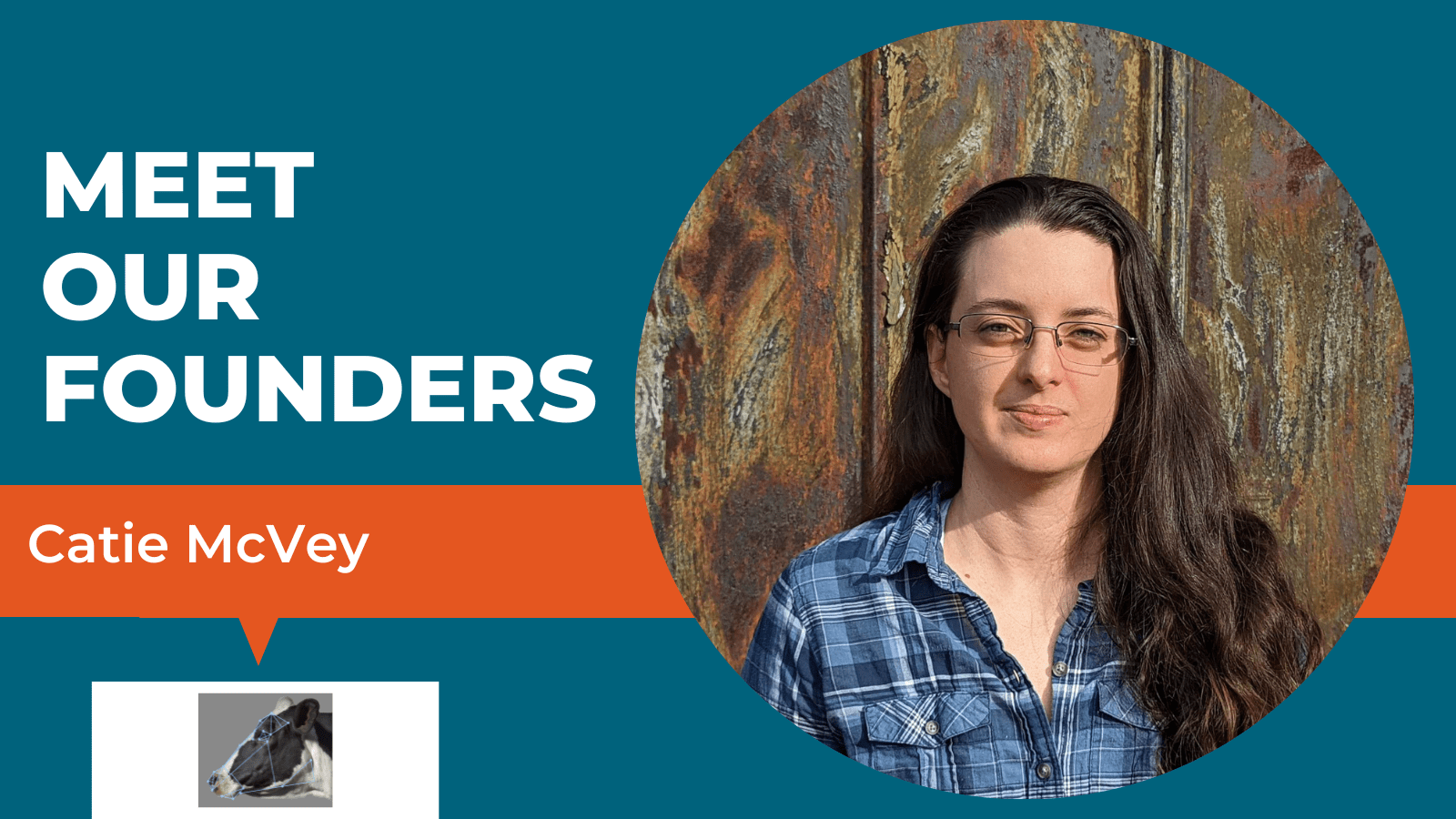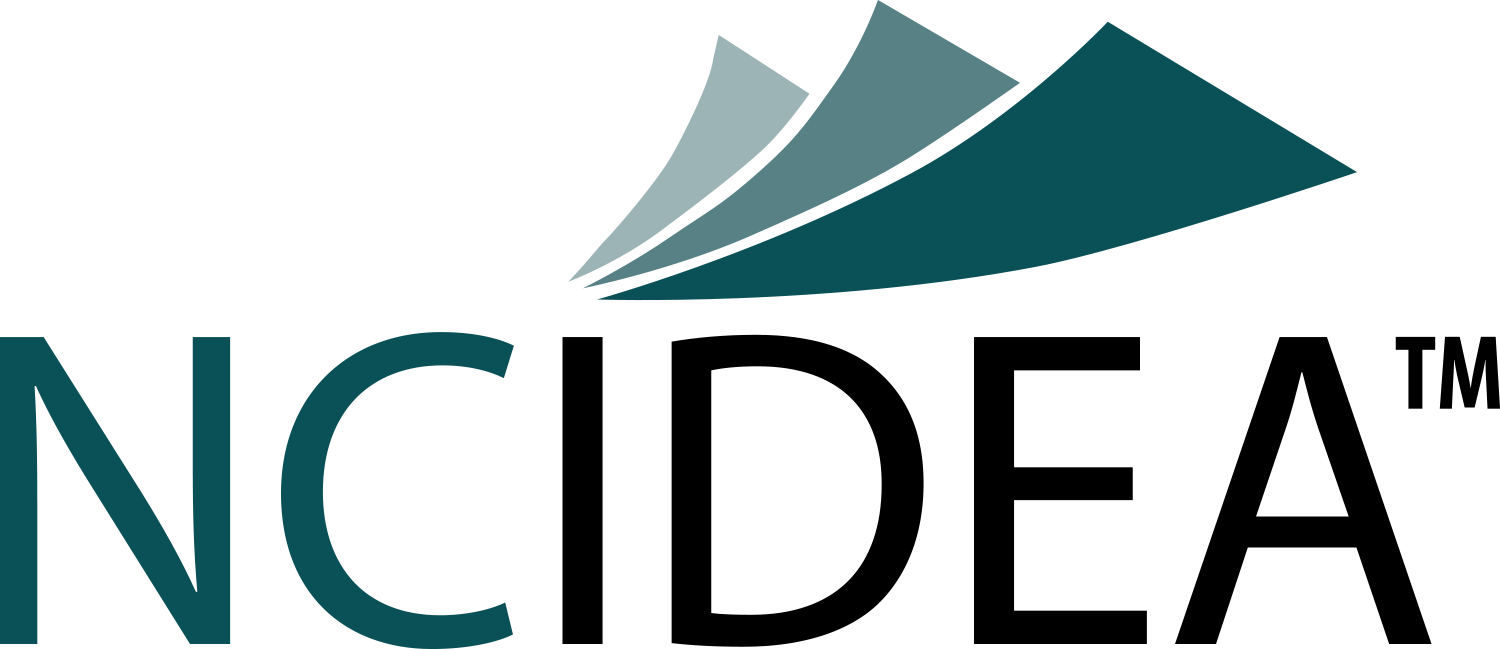
Catie McVey
DairyFIT – MICRO Spring 2023
Published June 14, 2023
As part of our ‘Meet Our Founders’ series today, we introduce Catie McVey, Founder and CEO of DairyFIT based in Graham, NC. With DairyFIT a single photo can serve as an instant job interview for your cow. We use patented computer vision and machine learning algorithms to evaluate an animals morphometrics in order to predict their long term productivity, health, and resilience to environmental stressors.
Q: What problem are you trying to solve and what influenced you to start your company?
A: I recently wrapped up my PhD in dairy data analytics from UC Davis. The bulk of my dissertation work was completed during COVID locked away in a tiny California apartment. I was there for both the terrible summer fires where for several weeks ash rained from the sky and you could barely see the blood red through the smoke clouds. I struggled with the air quality. The cows couldn’t even eat their TMR rations because it immediately got covered in ash. My horse got sick on the bad hay that came out of the summer cutting. It made me realize that climate change isn’t just a vague concept anymore. It’s here, and our farms aren’t ready for the chaos it’s going to bring. I believe passionately in the mission of land grant universities – but academic grant cycles are made to solve problems 10 years on the future. I figured, if the battle is here now, I want to be on the front lines fighting for my cows, and entrepreneurship is the best way to bring radical ideas into the world as quickly and agilely as possible. Most people don’t realize that dairy farmers were into big data before it was cool. We’ve been collecting massive quantitive of production records on a national scale to breed better cows for decades. The cows I work with today can produce three times the amount of milk than the animals my grandfather grew up hand milking. The modern dairy cow is the bovine equivalent of a Ferrari – capable of incredible feats of milk production, but like any high performance sports cow, not very resilient to hitting any bumps in the road. With climate change, the road is about to get very bumpy, and so we need to give our cows a lift kit – provide better supportive preventative care to our highest risk cows as a near term solution, and breed for more resilient animals as a longer term solution.
Q: How will your NC IDEA grant funds advance your company?
A: I’ll be using the NC IDEA grant to pilot test my system at a large organic dairy in Colorado. My main focus will be confirming the predictive power of my algorithms to identify cows at higher risk of dystocia (difficulty calving), but I’ll also be taking a look at a number of other diseases that cows are at heightened risk of contracting as they transition into a new lactation cycle following calving. If my algorithms hold up to this field testing, then I’ll be applying for SBIR grants to work with some early adopters to figure out how best to use this information to provide targeted early interventions to improve calving outcomes.
Q: What is your greatest fear as an entrepreneur?
A: Entrepreneurship is a powerful vehicle for change in the world, but then there’s the whole “with great power comes great responsibility” thing. I suppose I fear most the unintended consequences of my technology. I want to help cows, not hurt them. But there is always a risk of unintended consequences with new breeding selection criterion. I’ve gone the extra mile statistically to “de-black box” my algorithms, and intend to rely heavily on the dairy expertise of my beta testers in the early iterations of my tech to suss any of these threats out early. I also want to help farmers, not hurt them. The dairy industry has a long rich history of embracing new technology to improve animal care outcomes, but this rapid pace of innovation has left many small farms behind. I think NC has lost something like 30% of the dairies that were here when I left for grad school just in the time it took me to complete my PhD. So I’ve also gone the extra mile with my algorithms to ensure they work as well on a 100 cow dairy as on an 10,000 cow dairy, so I hope my technology will be one that helps these smaller farms embrace the digital revolution in dairy, and not serve to put them that much farther behind. (And yes, Jurassic Park is one of my favorite books).
Q: What is your favorite local business to support?
A: RanLew Dairy. They are a multi-generation farm and the last Grade A dairy in Alamance County. They have a small herd of pasture-grazed cows of just about every breed, including some really lovely rare breed Guernsey cows. In recent years they’ve diversified their business model by installing on-farm processing capabilities for cream-on-top clean label milk, soft serve ice cream, amazing egg nog for the holidays, and a paw paw gelato that is hands down the best ice cream I’ve ever had (and I consider myself something of a connoisseur). Randy hosts a few traditional barn dances every year in his historic quaker-built milk barn. I help feed calves and young stock on weekends (my weekly dose of cow therapy), and I’ll be piloting some of my newest sensors there later this spring.
Q: What is your favorite productivity app?
A: My donkey screeches at me if I don’t stay on his feed schedule, which helps reinforce the overall structure of my day I suppose.
Q: What other passions do you have besides your business?
A: I love the small farms gritty as much as I love the big high tech ones. And there is an incredible network of small farms in North Carolina embracing new regenerative agriculture techniques. My husband and I recently moved into my great grandfathers old farmhouse. By my grandmothers reckoning, we’ll be the 6th generation to live on this 40 acre homestead, and we are slowly but surely over the weekends restoring the farm to its former glory. We just got our first functional pasture fence put in and converted the old two-stall carport into a garage. We recently moved my horse in, and adopted a companion donkey from a local rescue that saved him from a kill pen (he’s missing half an ear and I had to shave him to get rid of his lice so he looks terrible at the moment, but getting healthier every day). We just moved a batch of yard chickens (bug control) out of the brooder, and are now raising our first batch of egg ducks along with a guard goose named Gilly. Our long-term micro farm dream is to try to develop a regenerative minimal-labor silvopasture system that works on small acreage in our orchard pasture, with egg ducks in a continuously moving chicken tractor system surrounded by heritage breed meat geese for predator protection, and using coppiced mulberry trees to minimize the amount of feed we have to buy in.
While visiting Graham, Catie recommends:
-
Hershey’s BBQ is a must – it’s the perfect compromise between eastern and western styles. Then grab some Graham Donuts on the way into town (if they aren’t sold out). Walk off the food coma meandering around the block in downtown Graham exploring the shops – the custom metalworks shop always has fun stuff. And then grab a movie at the old cinema for just a few bucks.
Support DairyFIT and Catie by:
- I’ll need more beta tester farms here very soon, particularly farms that want to more directly engage with their data to dial in algorithm performance to their specific management systems. I would love to recruit more NC farms, particularly the “odd balls” (robotic, organic, or heavily pasture-based dairies) that haven’t traditionally been the focus of big dairy tech platforms, or perhaps those that have more heavily customized niche breeding operations (show or commercial). I’m also hoping to take on some student interns to help with database management that want some exposure to the ag tech world. And if there’s a machine vision consultants/contractors out there passionate about working for cows, I could definitely use some help with the code bootstrap.


